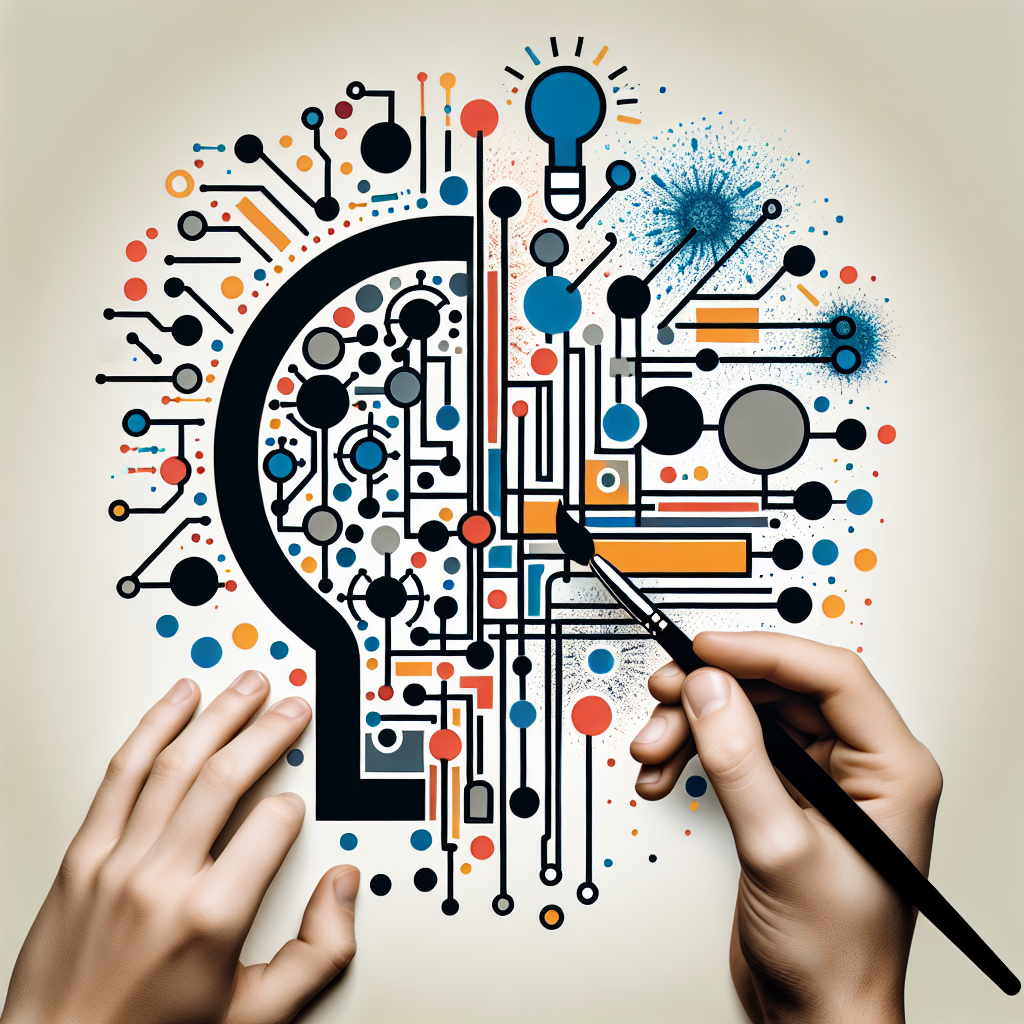Artificial Intelligence (AI) has been a hot topic in recent years, with many advancements being made in various fields such as healthcare, finance, and transportation. One area that has seen significant progress is AI’s ability to be creative. Traditionally, creativity has been seen as a uniquely human trait, but AI has shown that it can also be creative in its own way.
AI and Creativity: A New Perspective
Creativity is often defined as the ability to generate new ideas, solutions, or concepts that are original and valuable. It involves thinking outside the box, connecting seemingly unrelated ideas, and coming up with innovative solutions to problems. Traditionally, creativity has been seen as a product of human intelligence and imagination, but AI has challenged this notion by demonstrating its own creative capabilities.
AI systems are now being used to generate art, music, literature, and even fashion designs. These systems are trained on vast amounts of data, allowing them to learn patterns and trends that can be used to create new and unique works. For example, AI can analyze thousands of paintings by famous artists and then generate its own original artwork in a similar style. Similarly, AI can analyze millions of songs and then compose its own music that is indistinguishable from human-created music.
One of the key advantages of AI in creativity is its ability to work at a scale and speed that is impossible for humans to achieve. AI systems can process vast amounts of data in a fraction of the time it would take a human to do so, allowing them to come up with creative ideas and solutions much faster. This can be particularly valuable in industries such as advertising, where quick turnaround times are crucial.
Another advantage of AI in creativity is its ability to work without bias or preconceived notions. Human creativity can be influenced by personal biases, cultural norms, and societal expectations, but AI is free from these constraints. This allows AI to explore new ideas and concepts that may not have been considered by humans, leading to truly original and innovative creations.
Despite these advancements, there are still some limitations to AI’s creativity. While AI systems can generate new ideas and solutions, they lack the emotional depth and intuition that human creativity often relies on. AI may be able to compose a beautiful piece of music or create a stunning painting, but it may lack the emotional connection and meaning that a human artist can convey through their work.
Furthermore, AI’s creativity is often constrained by the data it is trained on. If the training data is limited or biased, the AI system may struggle to come up with truly original ideas. It is important for AI developers to ensure that their systems are trained on diverse and unbiased data to maximize their creative potential.
FAQs
Q: Can AI truly be creative?
A: Yes, AI has shown that it can be creative in its own way by generating new ideas, solutions, and concepts that are original and valuable. While AI may lack the emotional depth and intuition of human creativity, it can still come up with truly innovative creations.
Q: How is AI being used in creativity?
A: AI is being used in a variety of creative fields, including art, music, literature, and fashion design. AI systems are trained on vast amounts of data to learn patterns and trends that can be used to generate new and unique works.
Q: What are the limitations of AI’s creativity?
A: While AI can generate new ideas and solutions, it may lack the emotional depth and intuition that human creativity often relies on. AI’s creativity is also constrained by the data it is trained on, so it is important for developers to ensure that their systems are trained on diverse and unbiased data.
In conclusion, AI has opened up new possibilities in the field of creativity, challenging traditional notions of what it means to be creative. While AI may lack some of the emotional depth and intuition of human creativity, it has shown that it can generate truly original and valuable creations. As AI continues to advance, we can expect to see even more groundbreaking innovations in the creative space.

